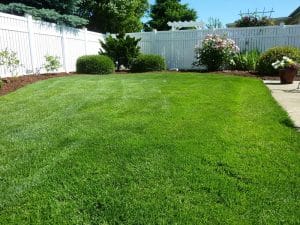Add More Green to your Yard This Spring
 Everybody loves green in the spring. With the increase in warmth and more hours of daylight every day, spring fever takes hold and our green thumb gets going! However, some of us wish our thumb could be a little greener. Here’s some tips to make your yard as green as the bonny hills of Ireland this spring!
Everybody loves green in the spring. With the increase in warmth and more hours of daylight every day, spring fever takes hold and our green thumb gets going! However, some of us wish our thumb could be a little greener. Here’s some tips to make your yard as green as the bonny hills of Ireland this spring!
Select plants Nature intended
Over thousands of years, Mother Nature has been selectively breeding and cultivating plants that will thrive in any area of the world. While you can provide similar conditions for plants that are not native to your area, these plants will never truly thrive as will plants that have, over the generations, successfully evolved and adapted to live in their natural habitats. If you have doubts about what plants will do best in your area, speaking to the professionals and experts at a garden center or the local agricultural extension service can yield helpful information.
Repurpose your lawn debris
Yes, we went there. One man’s trash is another gardener’s compost. Compost is the term given to decomposed plant material that gardeners use as a fertilizer and mulch. Many people think compost is difficult to get right, and to a certain extent, they aren’t wrong. But they’re not exactly right, either.
Compost is made up of five basic components: carbon-heavy materials, nitrogen-heavy materials, microscopic organisms, air, and moisture. The carbons and nitrogens, or “browns” and “greens,” are the parts of composting that give people the most trouble, closely followed by the moisture level, and then the micro-organisms and air content.
Compost does best when you follow a formula of 3 parts browns, 1 part greens, and 1 part moisture. You can’t exactly measure the air or micro-organism levels, but there are ways to estimate how much air your compost needs based on how fast you want it to “cook.” Browns can come from paper, cardboard, dead leaves, small twigs, dryer lint, and many other sources. Greens are “living” or recently-alive components, like grass clippings, hedge trimmings, vegetable scraps, coffee grounds, and more. You never want to add pet waste or human waste, but hair is alright in small amounts, though it counts as a brown rather than a green.
Air is one of the main things that keeps compost from smelling. Bacteria and micro-organisms that thrive in high-oxygen environments do not produce as many smelly byproducts as their oxygen-hating relatives. Incorporate air into your compost by “turning” the pile regularly. Some people do this every day, while others choose once or twice a week. Basically, you want to stir the compost like biscuit dough: mix the inside to the outside, and the top to the bottom. Use a garden shovel or turning fork, and go after it.
Moisture is tricky: too much water, and the bacteria drown and slow down the decomposition. Too little, and the microbes in the soil shrivel up. If you are good at eyeballing measurements, then add as much water as you have added greens whenever the compost feels or looks dry. Otherwise, just lightly spray the compost anytime it looks dry, until the water just barely soaks each section. You want the compost to be MOIST, not soggy, and definitely not dry as the Arizona sand.
Once the compost has cooked down enough, and you can no longer make out eggshells here or lettuce leaves there, it is time to use your homemade fertilizer. You can use it as a side-dressing, putting it at the base of needy plants, or you can even make something called “compost tea” by steeping handfuls of compost in water, and then giving your plants a drink with the results. You can also mix compost into beds and containers for a great transplant booster.
Reduce your chemical footprint
Chemicals like commercial fertilizers, pesticides, and herbicides are some of the most dangerous substances when it comes to the ecology of our planet. In fact, again, Mother Nature has made provision over the years for reducing “bad bugs,” and there are many at-home do-it-yourself options for weed control and plant health that do not contaminate groundwater. If at all possible, it is important that more homeowners “go organic”; compost is the best fertilizer ever invented, marigolds and mint make great mosquito and fly repellent options, and vinegar is a great weed-killer in the right proportions. Give them a try, and get growing better and greener this spring!
We hope these tips gave you some great ideas for your lawn and landscape this spring! If you need help planning a beautiful landscape this spring, we here at Andy’s can help! Give us a call today!
